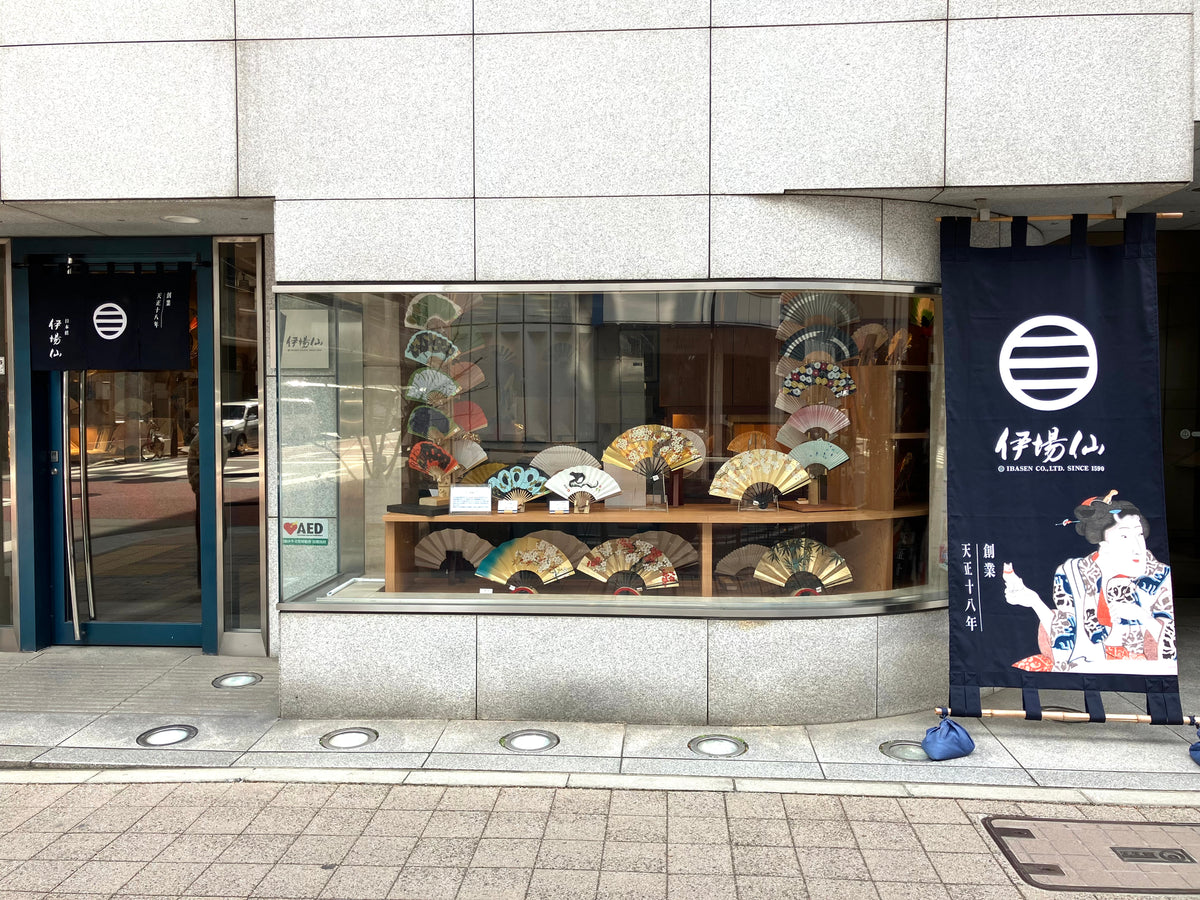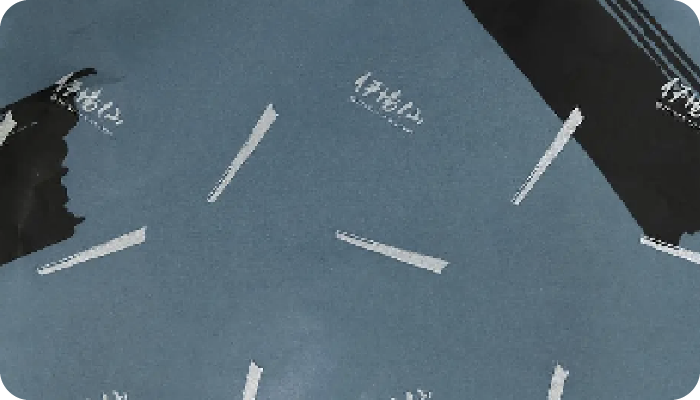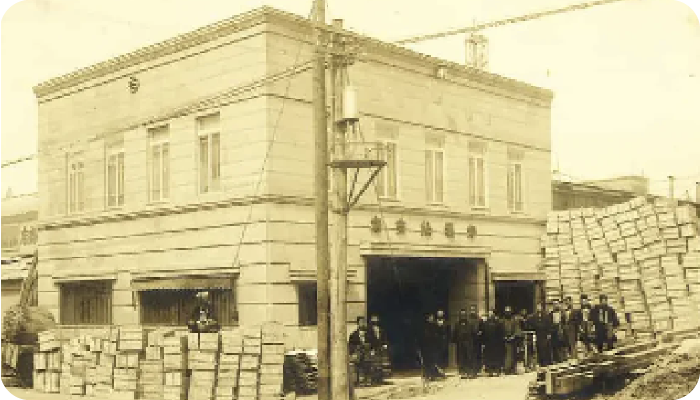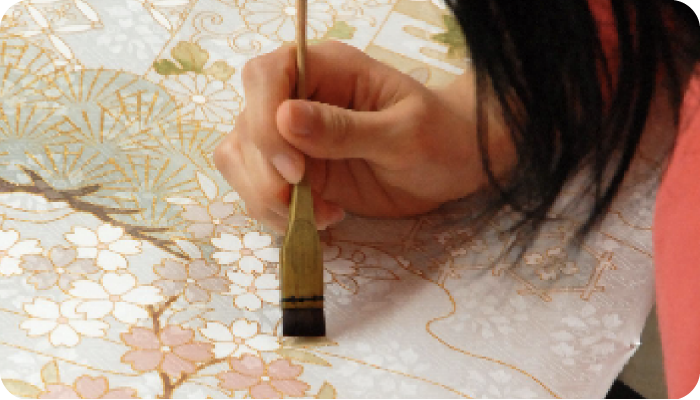folding fanNames of the various parts of the "M"|Explanation of basic knowledge such as structure and main types of the "M".
folding fanA "windshield" is a tool used to blow air and cool off during the hot and humid season.round fan(The origin of the uchiwa (Japanese fan) is in China, but it is now used as a convenient and portable tool for cooling off in the summer.folding fanIt is said that the idea of making the fan in a portable form was invented in Japan. It used to be called a hiwogi (Japanese cypress fan), which was made by stacking bundles of wood. In Japan, they have been made since the Nara and Heian periods.folding fanThe structure of hiwogi fans has remained largely unchanged since the Nara and Heian periods. The fact that it is basically made with several to several dozen "fan bones" and a "fan surface" is said to be the same no matter what kind of fan is used.folding fanThe same is true no matter what the age of the fan is. This time, we would like to introduce you to a fan that is loved by many people all over the world.folding fanThis time, we would like to introduce the names and types of each part of the fan, which has many fans and is loved by people all over the world.

folding fanName of each part of
folding fanis made up of various parts, all of which have names. First,folding fanThe following are the names and characteristics of each of the parts of the
Title
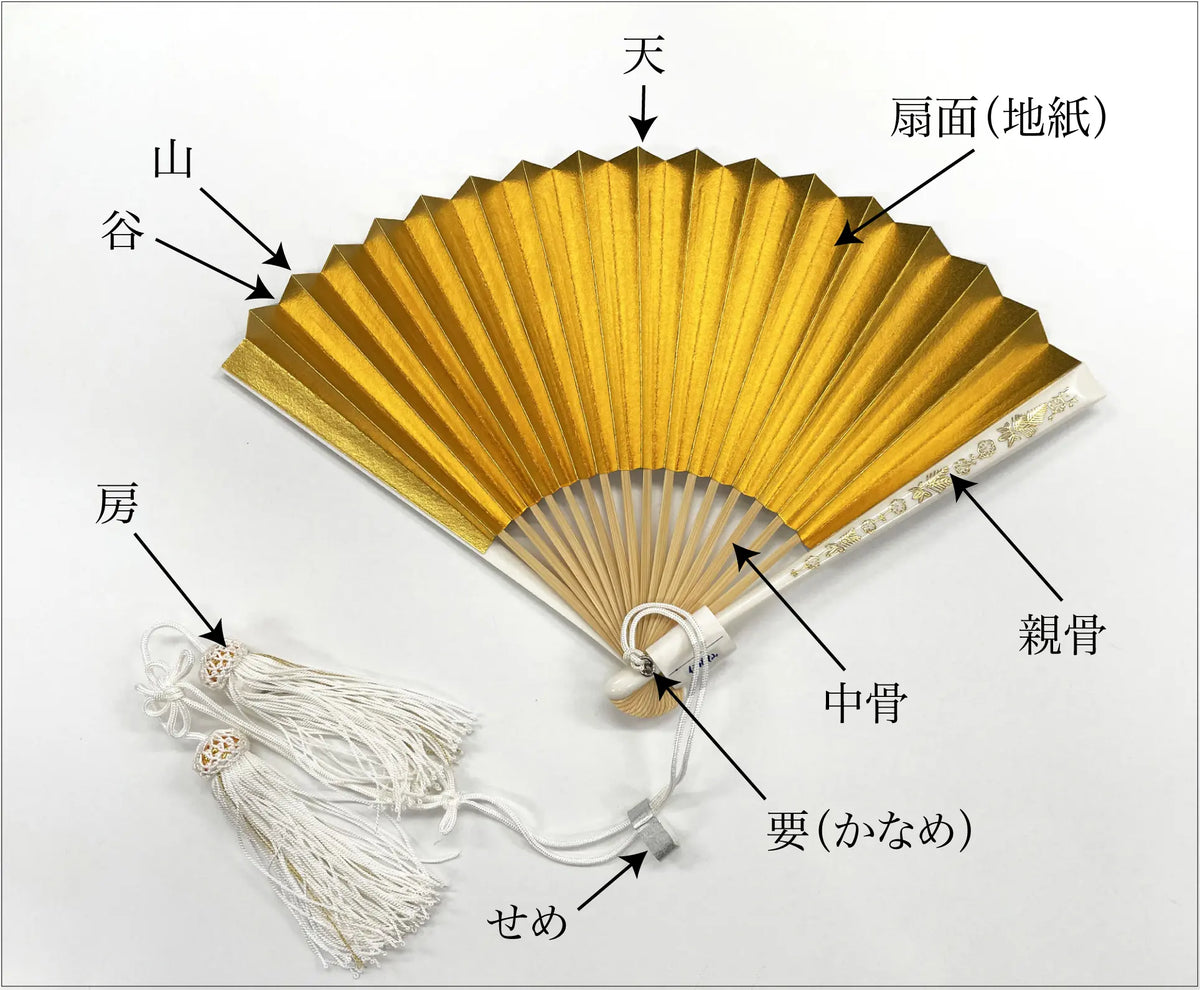
folding fanName of each part of
Fan face
What is "Senmen"?folding fanThe fan is a piece of paper or cloth attached to the front side of a fan to create a breeze,folding fanThe main part of the "fan" is the paper-covered type. The paper-covered typefolding fanThis part is sometimes called "base paper" in the case of
Heaven and earth
Ten" refers to the top part of the fan surface, and "chi" refers to the bottom part of the fan surface. Goodfolding fanThe top part of the fan must be tightly closed. The fan surface folds over tightly when closed.folding fanhas a beautifully flattened top.
Fan bone
What is a fan bone?folding fanThe fan bone is the frame of a folding fan. It is mainly made of bamboo, but some high-end products are made of Japanese cypress or fragrant wood such as sandalwood. Casualfolding fansome fans have a fan bone made of plastic. Goodfolding fanis characterized by a solid fan bone.
Oyabone (parent bone)
Oyabone" refers to the thick, sturdy bone at both ends of the fan bone. The narrowed end is made inwardly in order to prevent it from opening accidentally when closed. This narrowed tip is sometimes referred to as the "hips.
Nakabone (middle bone)
The "middle bone" is the inner fan bone sandwiched between the main bone, and is sometimes called the "middle bone. It is characterized by being thinner and more flexible than the main bone. The total number of the middle bone and the main bone is called the number of "ma," which can be as little as 8 ma or as much as 40 ma for a large number. Generally speaking, the more spans, the higher the quality of the product.
Kaname
Kaname" is the part that holds the main bone and the middle bone together at a single point. It is made of metal or plastic, and is sometimes described as "yame. It is said that the name "Kaname" was originally derived from the name "Kani-nome" because of its resemblance to the eyes of a crab.
In short, when brokenfolding fanIn other words, it is a very important part that, if broken, will render the "I" in the "I" in the "II" unusable. This is the origin of the word "kanshin kyoku," which means especially important.
Tassel
A tassel is a tassel-like object that is attached to a pipe-like or ringed tassel. Originally, tassels were attached like a strap through a cord, and were intended for use around the wrist. Today, tassels are used in celebrationsfolding fanIt is now often used as a decoration, with red and white tassels attached to the
Mountains and Valleys
Yama" and "tani" refer to the folds of a fan that is bellows-shaped. The raised side seen from the front is the mountain, and the concave side is the valley.
Fan surface by materialfolding fanMain types of
folding fanare Kyofolding fanandEdo fanbut they can also be divided into various types according to the material used for the fan surface. Here, we will discuss the commonly seenfolding fanHere we will introduce the commonly seen types of
Paperfolding fan
Paper is used for the fan surface.folding fanand "paperfolding fanis called "paper" in Japanese. It has been used in Japan since ancient times and is the most commonfolding fanpaper.
The bending of the middle bone allows a lot of wind to be generated, making it suitable for use for the purpose of blowing air to cool the room.folding fanThe paper is pasted together on both sides of the "K", so it is difficult to see the middle bone, which makes it look good.
Clothfolding fan
Clothfolding fanis a fan made of fabric instead of paper.folding fanThe fan surface is sometimes embroidered or printed, and sometimes made of paper. The fan surface is sometimes embroidered or printed, and the paperfolding fanThe fan surface is sometimes embroidered or printed, and features gorgeous designs that are not found on paper. However, since it is thicker than paper, the fabric is lined on one side. The advantage is that it is durable and tear-resistant, but the back side may not look good because the middle bone is visible.
Since there are different scenes suitable for different fabrics, you can enjoy changing the type according to the situation and clothes you are going out in. Cotton fabrics are soft and gentle and will go well with yukata and kimono. Hemp material has a cool and rustic texture and is recommended to match with summer clothes or clothes made of the same linen material. Polyester material is characterized by its transparency and goes well with everyday wear and casual outfits. Silk material has a luxurious sheen and will suit business and formal occasions.
Sandalwoodfolding fan
There are also ita-fans made of layered pieces of sandalwood, a fragrant wood. Ita-fan is a fan with no paper or fabric attached to its surface.folding fanThe fan is made of a wooden board with no paper or fabric attached to its surface. It is not used for the purpose of blowing air, but mainly for enjoying the fragrance. In many cases, it is openworked or painted, so you can enjoy not only the fragrance but also the elegant and beautiful design.
More detailedfolding fanPlease refer to the next section for more information on the different types of
folding fanMain types of|Classification by material, use, place of origin, size, and correct usage
IbasenRecommendation of 4 types of folding fans
「IbasenFounded in Tensho 18, "Tensho" has a long history of 430 years.folding fanIt is a long-established company in Japan. In order to carry on the traditional culture of Japan, we focus on making products with Edo designs and colors.IbasenThefolding fanare characterized by the use of carefully selected domestic bamboo, Japanese paper, fibers, and other carefully selected materials. Here,Ibasenis full of charm and is recommended by thefolding fanWe would like to introduce you to the following Made by the hands of skilled craftsmen, we are proud of ourfolding fanPlease enjoy our products.
Title
Ukiyo-e Woodblock print fan, Ukiyo-e Fugaku Sanjurokkei Hokusai Kanagawa-oki Namiura Box &folding fanwith stand
Fugaku Sanjurokkei (Thirty-six views of Mt. Fuji)" is a series of representative works by Hokusai Katsushika, an ukiyoe artist active in the late Edo period. The most famous of these, "Kanagawa Okinamiura," is boldly designed. The huge waves splashing wildly in a calm white and blue color scheme make a striking impression. A small fishing boat floats in the middle of the waves, and the contrast between the two adds to the power of the work. Fuji is depicted in the center, obscured by the spray from the waves, a technique that is said to have been used to emphasize the presence of Mt.IbasenFuji, which is said to be a technique used to emphasize the presence of Mt.
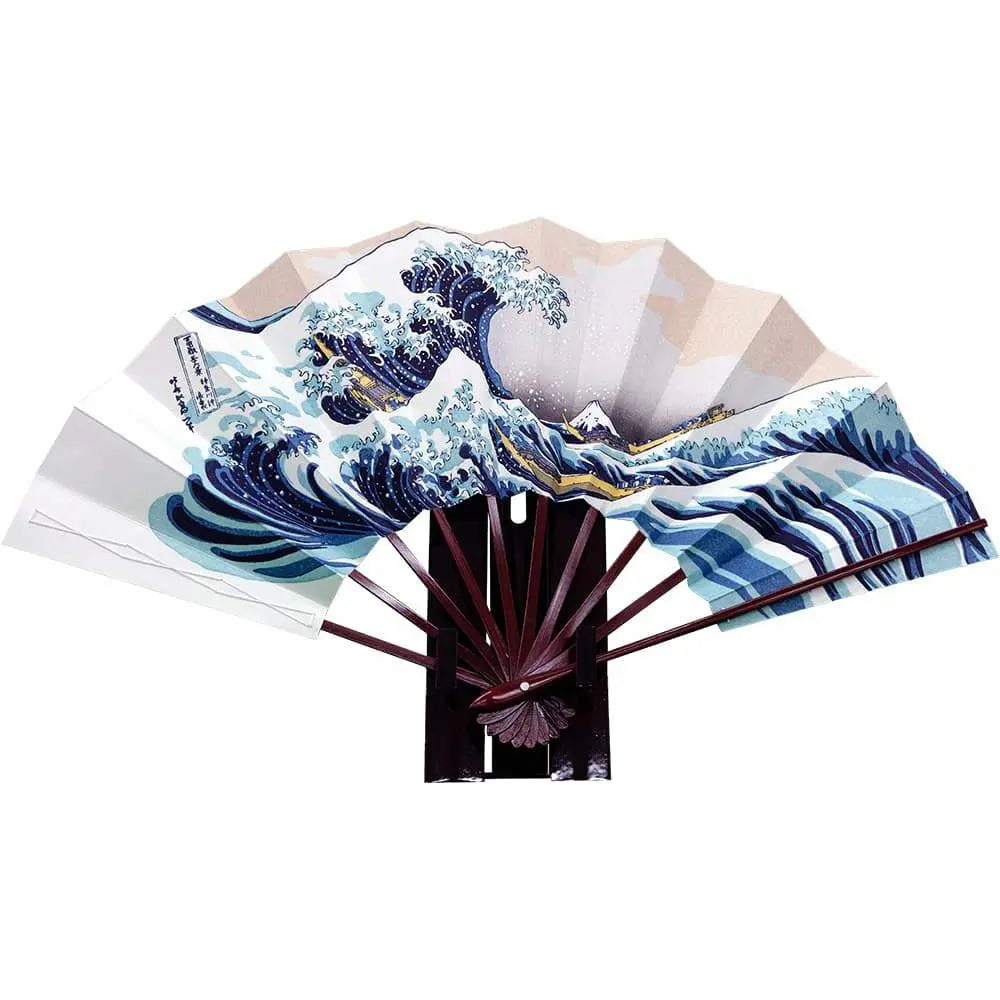
Title
Edo fan Ma Ku Go (Umakuiku)
Nine horses running to the left are depicted.Edo fanThe nine horses are running to the left. The "Nine Horses Going" is a pun on the phrase "Umakuikuand is popular as a lucky guess. Furthermore, the nine horses are said to represent nine different kinds of luck: luck in victory, luck in money, luck in career, luck in family, luck in love, luck in health, prosperity in business, a good catch and a good harvest, and success in entrance examinations. In addition, the left horse, which is drawn facing left, also has the meaning of "nothing can come out on the right," and is therefore recommended for the most critical moment in the game.
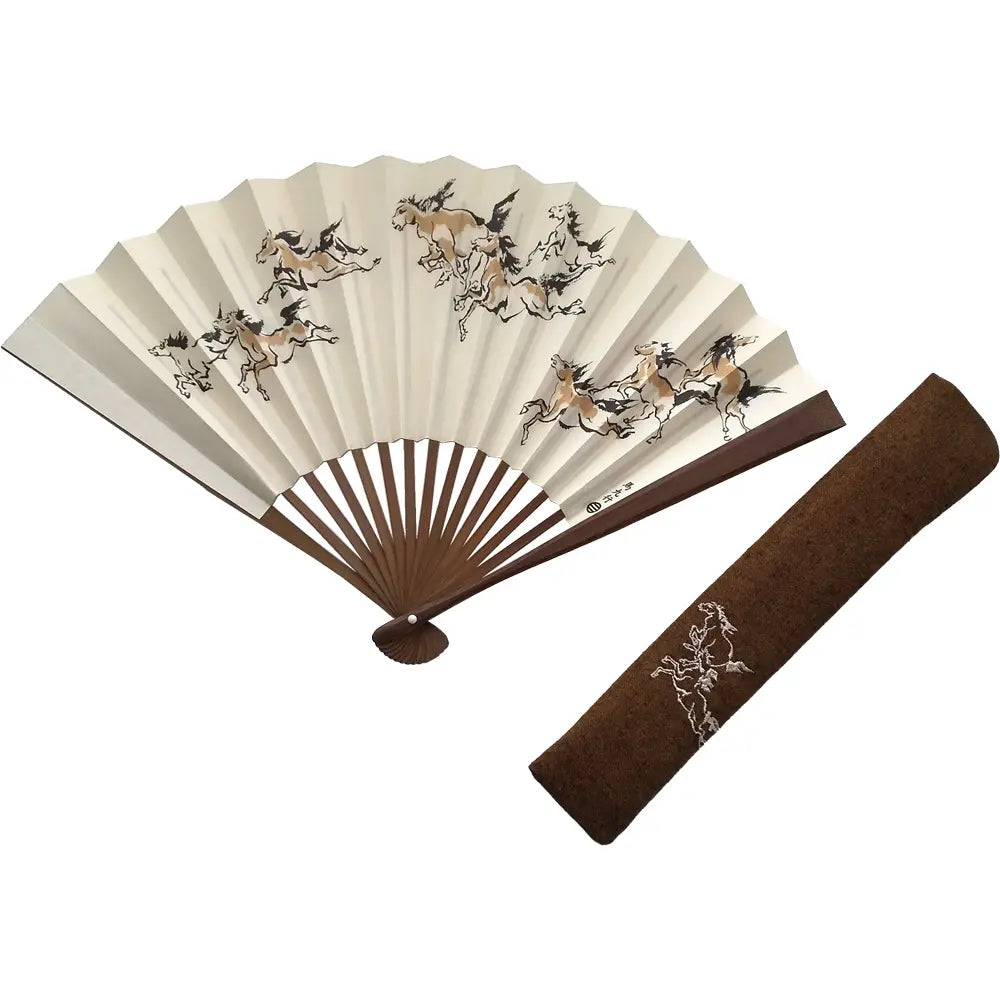
Title
Edo fan Double-sided pattern Dragonfly Blue
Dragonflies, symbols of a good harvest, were called "kachimushi" (victory bugs) because they only move forward and never retreat. As an insect of good fortune, dragonflies were valued by warriors, and many dragonfly motifs are used on armors and costumes. Some people use dragonfly motifs as a good luck charm when they have a game to win or something they do not want to give up.
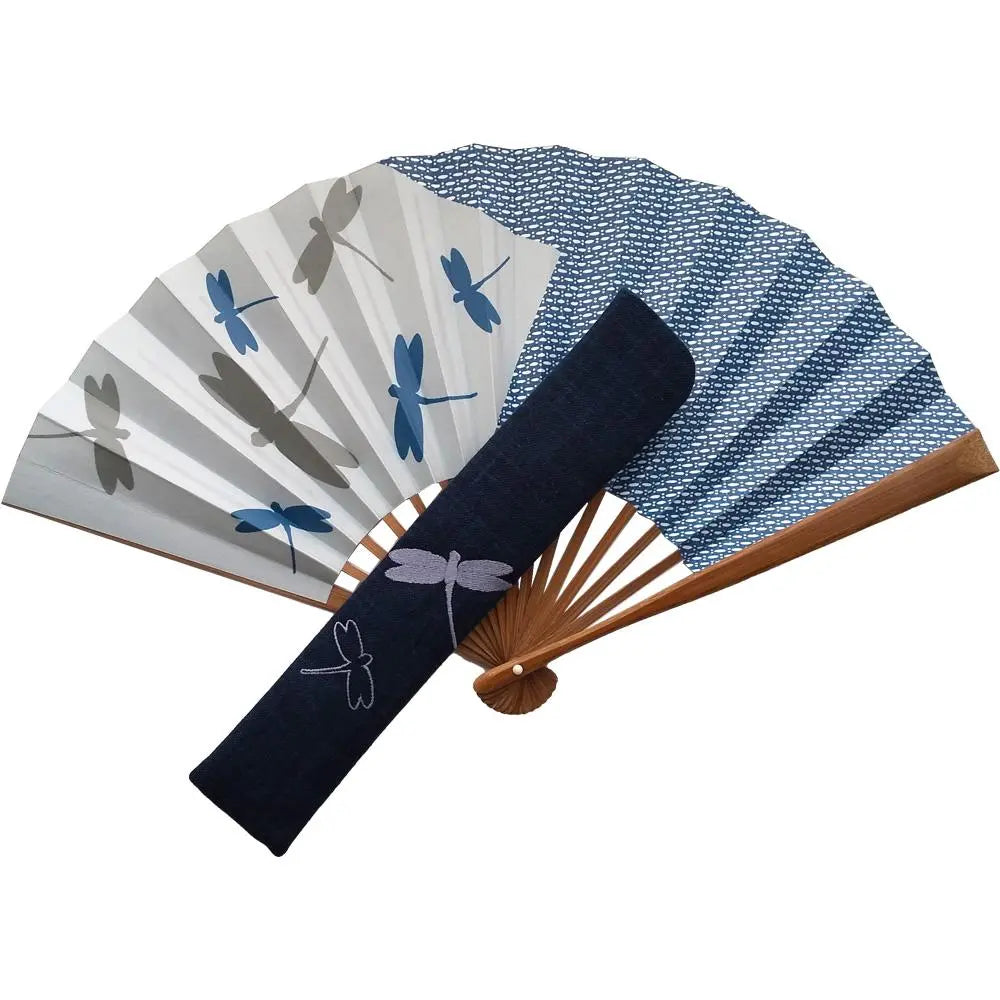
Title
Shikebiki fan Nada (inside)
ShikebikiThe word "shike" in "shike" is used to describe the silk threads drawn from silkworms. The technique of dyeing delicate striped patterns on fabric with a brush of shike shaved into a comb-like shape is calledShikebikiThe technique is called "shime" (shaving). Because it is all done by hand by craftsmen,Shikebiki fanThe "Naka-nanada" has a different taste from the woven stripes, and you can enjoy the deep stripes and latticework. Nakahanada" is a kind of indigo dyeing color, a slightly darker blue. It is made by expert craftsmen with an elegantShikebikiPlease enjoy the elegant stripe pattern of "Nakahanada" by our expert craftsmen.
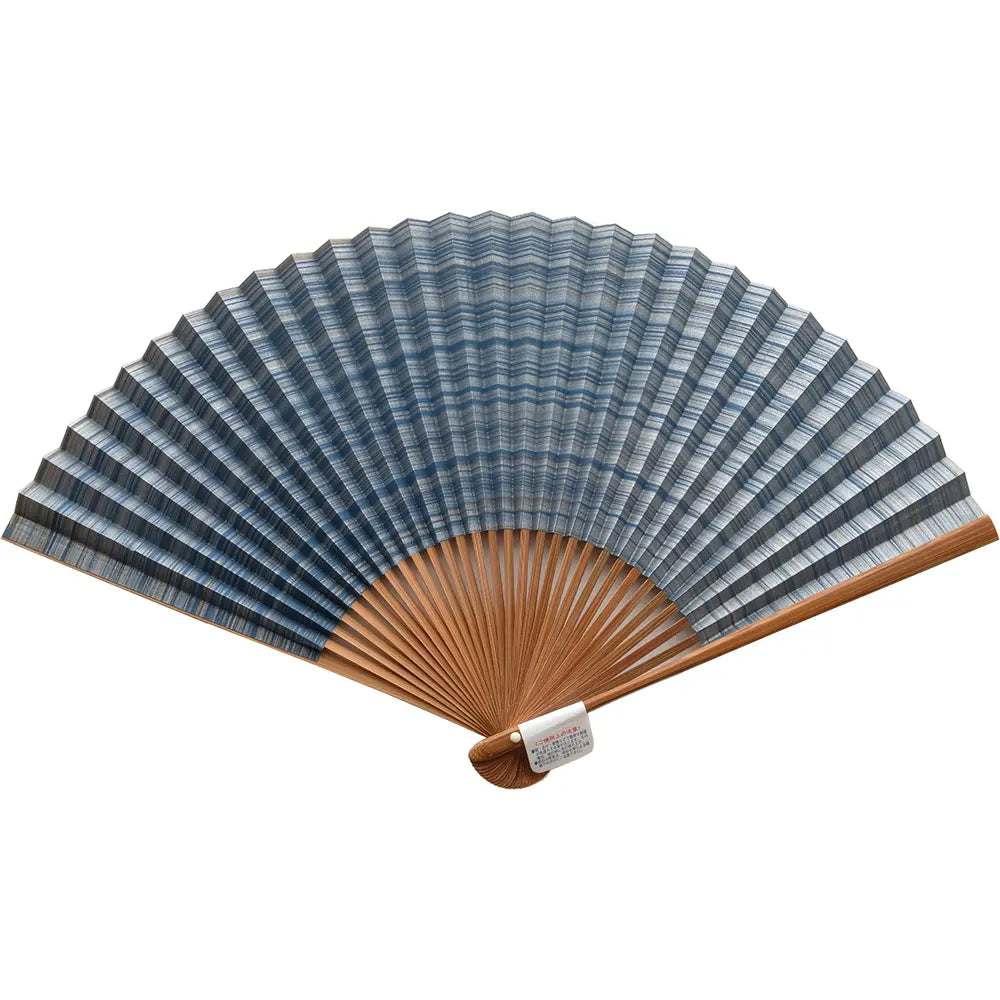
folding fanBags and boxes (Ibasen EC site)
folding fanLet's figure out the names of the parts of the "Ibasen" and pay attention to the details!
folding fanThe names of the parts of the "Mere Old Man", the characteristics of each, and the recommendations for each.folding fanand so on.folding fanThe "Meat" is made up of various parts, so you can enjoy various tastes depending on the combination of parts. Please pay attention to the details and try your favoritefolding fanPlease try to find your favorite one.
